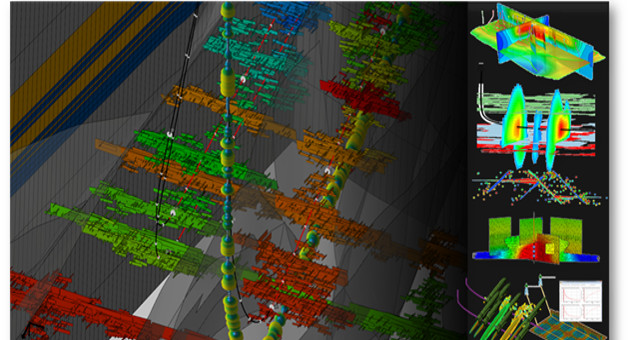
How 3D simulations can transform reservoir productivity
It’s no secret the oil and gas industry is operating in a “lower-for-longer” environment. The combination of low oil prices, geopolitical instability, pressure for low-carbon solutions and general market volatility underlines the need to raise productivity, efficiency and reliability as safely as possible.
So, in order to make sure investments in unconventional plays pay off, a more than the conventional approach is needed. It’s an example why the combination of my company, Baker Hughes, a GE company, comes at the right time for our industry – a company that’s the first and only fullstream productivity leader that’s revolutionizing how our industry thinks and acts through innovation that matches economic realities and operating environments.
One of the ways we’re doing that is with thought leadership and research.
To gain a better understanding of shale reservoir and increase confidence in predictions of how best to design wells, Baker Hughes, a GE company (BHGE) has developed a comprehensive advanced integrated methodology to maximize efficiency, improve recovery and reduce uncertainty in unconventional and tight reservoirs.
For several decades, the process of hydraulic fracturing has been widely used for the stimulation of low permeability unconventional source rocks such as shales. And today, most operators use highly idealized, over-simplified mathematical models that don’t accurately reflect reservoir reality. Without understanding the reservoir and what’s happening there, the only choice has been to use the typical approach. As we’ve already seen, that approach is often experimental, inaccurate and ineffective.
As a result, operators are left in the dark for a large chunk of their work, leading to lost time and lost money.
So how could operators obtain a better picture of how well they can better tap into a potential reservoir?
Research shows using 3D modeling can help illustrate that ignoring subsurface complexities such as natural fractures size, orientation and location can lead to an overestimation of stimulated area. By utilizing such complexities in modeling of hydraulic fracture propagation helps optimizing treatment designs and reducing operational costs for field applications.
Further, to accurately evaluate propped complex systems, a full 3D coupled simulator is required to account for proppant placement in complex systems. For example, the simulator used in a study I’ll be presenting at this year’s Society of Petroleum Engineers Annual Technical Conference in San Antonio couples geomechanics, fracture mechanics, fluid behavior and proppant transport to determine the fracture geometry and proppant distribution in the complex fracture systems.
Essentially, operators can improve recovery and reduce uncertainty in unconventional and tight reservoirs by leveraging 3D simulations of models to better understand unconventional or tight and structurally complex plays.
To learn more about this, and other research that will lead to transformation in our industry, I invite you to stop by the BHGE booths (#1637 and 823) to hear more from me and my colleagues October 9 - 11 in San Antonio.

HR-IT Project Manager | SAP SuccessFactors ©️ certified | RWTH PhD | PMP v5 | ex-Geologist
6yNice to see my work on DFN models is still being used within BHI/BHGE. The model was initially designed (and built using Jewelsuite subsurface modeling ) to visualize fracture distribution and fracture connectivity in faulted, mechanically layered carbonate reservoirs.
Senior Reservoir Engineer
6yThanks for the post. Very informative. But how practical do you it consider variation of properties in 3D space will be terms of planning a HF jobs. As in todays P3D modelling workflow, we already consider vertical variation of elastic properties and petrophysical properties. Do you think 3D modelling will bring about a major shift in HF design.
Chief Operating Officer at XGS Energy
6yJorge Luis Barrios Rivas, Paper number is SPE-187355-MS Numerical Modeling of Proppant Transport in Complex Hydraulic Fracture Propagation Thanks,
GeoScientists, PhD - PG - PMP - MBA at Battelle
6ygood afternoon could you please after submitting the paper give the number of paper to locate it in the archives of the SPE Western Venezuela Petroleum
Reservoir management Technical advisor en PDVSA Petroleos de Venezuela S.A.
6yIt 's very interesting it. The world wait for you. Its a good project. Good luck.